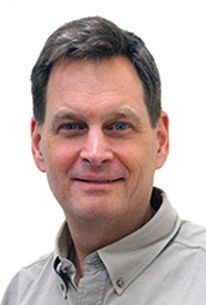Thoughts From Engineers: Data for a New Era in Water Management

Engineers are trained to solve for unknowns, but we absolutely need solid facts elsewhere in the equation. Data are key, folks, and we all know our solutions are only as good as what we have to work with. The Internet of Water (IoW), a concept first articulated in 2017 (bit.ly/IOWater), tries to tackle some of these issues, recognizing that water data are more useful when brought together into one consistently formatted, widely accessible and integrated platform. Knowledge is power, as they say, and where do many of us go to get it these days? Often in digital format on the internet.
The U.S. Geological Survey (USGS) has historically been the federal arm responsible for mapping U.S. waterways. The current National Hydrography Dataset (NHD), combined with the Watershed Boundary Dataset, form the backbone of a cataloging system that goes back to the earliest days of agency operations. The NHD respectably captures baseline parameters on some 9.5 million miles of streams, roughly 8 million bodies of water and 130,000 hydrologic subunits within the continental United States, Alaska and Hawaii.
The USGS has taken the lead in designing a new “geospatial information infrastructure” for the nation’s waterways in the form of the 3D Hydrography Program (3DHP; on.doi.gov/3epCCfn), a subset of the larger initiative represented by the USGS 3D National Topography Model (3DNTM). Early estimates identified more than 400 uses for the updated platform and placed the value of a modernized hydrography dataset at roughly $1.13 billion per year. This project is linked to a long-term vision to create—in cooperation with the National Oceanic and Atmospheric Administration—a “3D Nation” (or “continuous elevation surface”) that includes not only the highest U.S. terrestrial elevations but also the deepest points within the oceans—and as much related data as available in-between.
Program Elements and Vision
Data infrastructure is useful to the extent it accurately represents the defining elements of a physical system. In developing the new 3DHP program, USGS simplified the model to capture features key to understanding core hydrologic processes. The revised data model eliminates references to levees and locks, for example, but indicates connection points to stormwater systems as well as junctures among surface water and groundwater. The new 3DHP data model also is consistent with standards established by the Geospatial Data Act of 2018—another nod to the IoW ideal—that mandates interoperability with other datasets.
Unlike the present NHD, which is largely a surface-water model, the 3DHP is designed to more accurately represent hydrologic systems as they are, complete with surface, subsurface and engineered segments. The ultimate goal for this model is to capture the hydrologic cycle on a watershed scale, capturing intersections with related geospatial systems and environments (groundwater, wetlands, coastal estuaries, etc.) as well as man-made environments. Streams and rivers no longer end at municipal boundaries—giving rise to the aptly named “urban deserts”—but move through culverts, urban stormwater systems and other “reconfigured” hydrology. Consistent with the mission to flesh out a historically one-dimensional representation, the National Wetlands Inventory, soil maps, land-cover databases, transportation corridors and other engineered environments are included in the mix.
An additional long-term goal includes incorporating inland bathymetry into the next generation of the 3D Elevation Program (3DEP) dataset. The foundational hydrography data for this model is generated from 3DEP lidar and 1-meter digital elevation models, a significant portion of which have already been collected, along with high-resolution NHDPlus baseline datasets. Substantial data still needs to be collected and integrated into the 3DHP database. This is a key part of the task ahead, which USGS acknowledges is highly dependent on partnerships and contracts with other agencies and the private sector.
First Phase of 3DNTM: Uses and Applications
A principal advantage of the new 3DHP is the level of detail—think individual buildings, powerlines, trees—made possible with lidar-generated imagery. The river modeling capabilities embedded in the new 3DHP translates to more-accurate flood forecasts for specific neighborhoods, streets and structures. Use of real-time rain-gauge data from inner-city stream corridors—already implemented at some level in cities such as Washington, D.C.—means that flood-risk-assessment modeling and management can make significant advances. Municipal officials can more-accurately identify patterns in urban flooding or city infrastructure in need of reinforced design and construction.
A model that incorporates multiple hydrologic layers means regional planning can be broader in reach and more integrated in scale and scope. Location of groundwater used for municipal drinking water supplies can inform decisions relative to specific land-use activities. Toxic spills in surface waters can be monitored for threats to nearby groundwater. The new data model means new levels of analysis and planning are possible in areas as diverse as agricultural development, wastewater planning, drinking-water source protection, urban infrastructure design and ecosystem protection.
Working Toward Peak Model Performance
The value of USGS’s 3DHP in terms of disaster mitigation, planning and modern-day decision-making is clear. When in the grips of extreme flooding—as recently experienced in Kentucky earlier this summer and elsewhere in the United States—the more detail public agencies have on local water conditions, the better positioned they are to anticipate and/or prevent a crisis. A dataset that distills something as complex and multi-dimensional as our nation’s hydrology, and makes it accessible to a variety of users and decision makers, is an endeavor whose value will grow as more data are added and more applications materialize.
As rivers swell, overtop banks and undermine infrastructure with each round of extreme storms, the need for confidence and “security” grows. Data about our geophysical environment—and the scientific underpinnings of which those data are a part—give us confidence and hold us up in times of flux. This is such a time.
About Chris Maeder
Chris Maeder, P.E., M.S., CFM, is engineering director at CivilGEO Inc.; email: [email protected].


